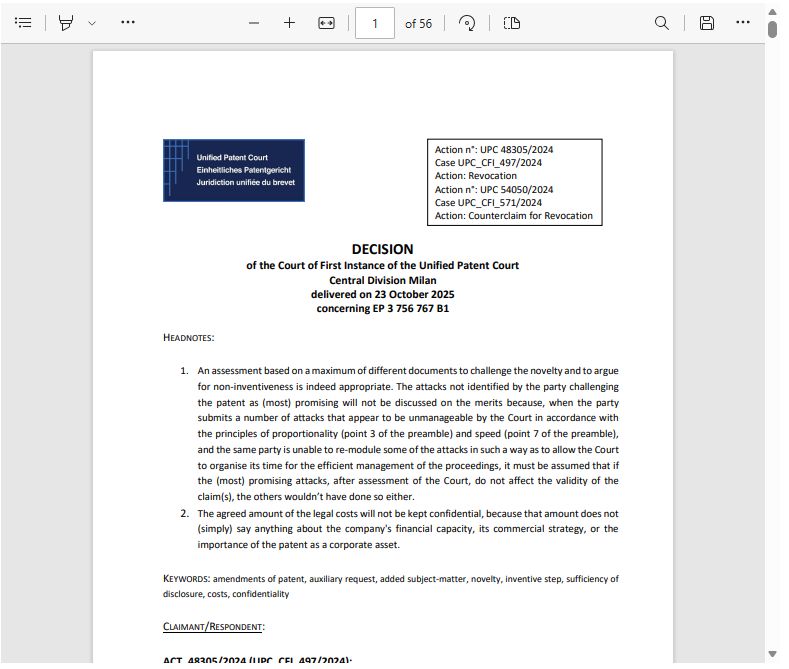1. Key takeaways
The Court may limit its review to the "most promising" attacks
A high number of undifferentiated attacks suggests a lack of strategy, and the Court is not required to remedy this by choosing one that suggests greater or lesser success of the attack. Nor is the Court required to establish a hierarchical or conceptual order in the parties' defenses. The Court may require to indicate which attacks are considered most promising. This would limit the examination and discussion at the oral hearing to these alone, based on the assumption that if the attacks the party considers most likely to succeed fail, those considered less effective would also fail. The panel considered that an assessment based on (a maximum of) two different documents to challenge the novelty and three different starting points to argue for non-inventiveness was appropriate.
New invalidity grounds raised for the first time at the oral hearing are inadmissible
The Claimant cannot introduce new grounds of added matter for the first time during the oral hearing. This newly raised attack is brought up too late to be taken into consideration in the procedure. The Defendant only had the opportunity to respond to this argument in their final reply at the oral hearing, while there were no (known) objective obstacles for the Claimant to present this added matter attack earlier, during the written procedure.
Assessment of inventive step
In order to assess whether or not a claimed invention was obvious to a skilled person, the Court can follow the problem and solution approach (PSA) as also used by the EPO, as a tool to assess obviousness, but nothing prevents the Court from following a different approach.
An agreed amount of legal costs will not be kept confidential
The parties reached an agreement on the legal costs of the successful party to be borne by the unsuccessful party. The Defendant requested the Court to order the agreed amount as confidential. The Court found no justification for confidentiality, as the agreed cost figure did not inherently constitute a trade secret or sensitive business information.
A partially successful claimant may still bear the majority of the patentee's costs
The Court considered the Defendant as the most successful party, as the patent will be maintained in the form of auxiliary request 3. The Claimant, as the most unsuccessful party, has to bear two third of the legal costs of the Defendant.
2. Division
CD Milan
3. UPC number
UPC_CFI_497/2024
4. Type of proceedings
revocation action, counterclaim for revocation
5. Parties
Claimants: bioMérieux UK Limited, bioMérieux SA, France, bioMérieux Deutschland GmbH, Germany, bioMérieux Italia S.p.A, bioMérieux Austria GmbH, bioMérieux Portugal, Lda., bioMérieux Benelux BV, Netherlands
Defendant: Labrador Diagnostics LLC, US
6. Patent
EP 3 756 767
7. Body of legislation / Rules
Art. 65 UPCA, Rule 104 RoP
2025-10-23-CD-Milan-UPC_CFI_497-2024-ACT_48305-2024 Download
The content of this article is intended to provide a general guide to the subject matter. Specialist advice should be sought about your specific circumstances.




